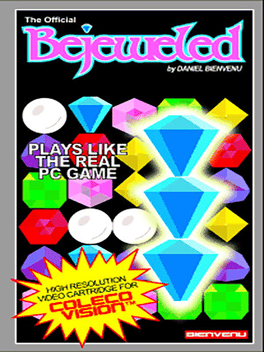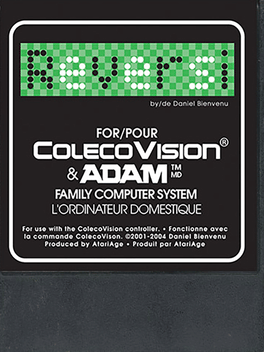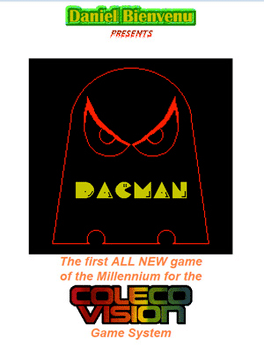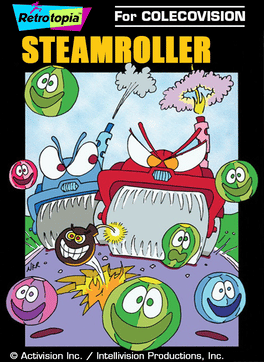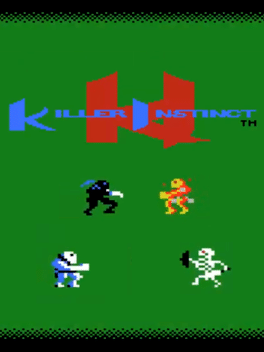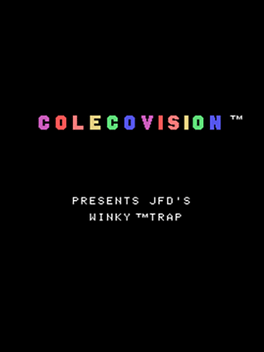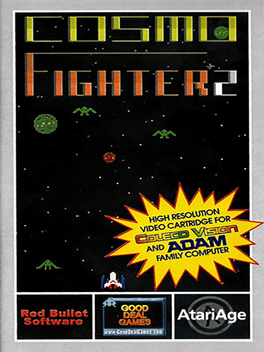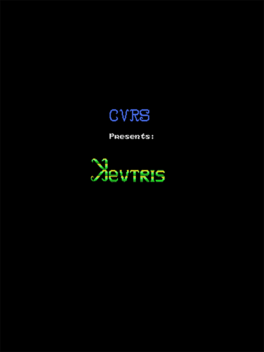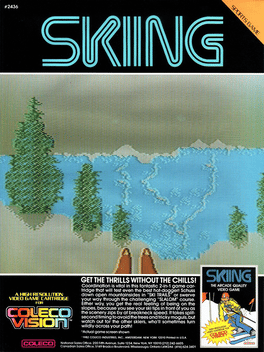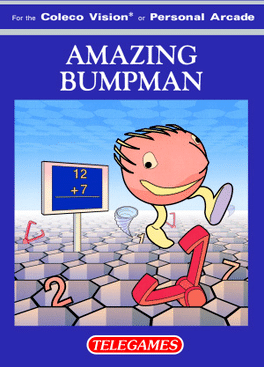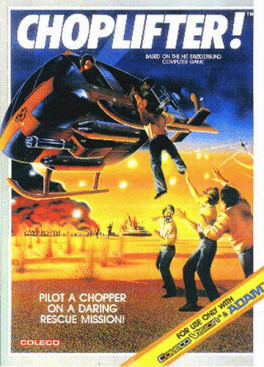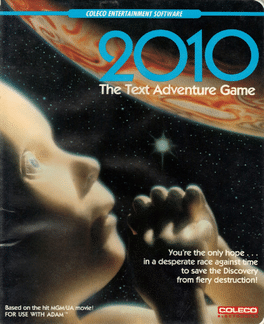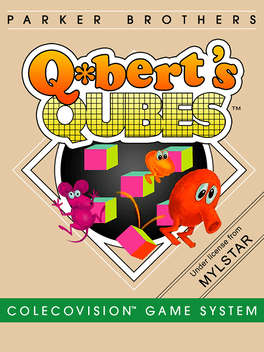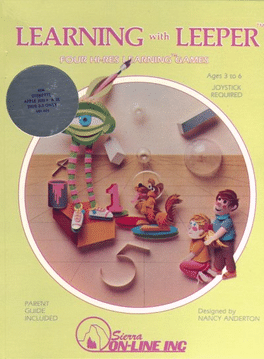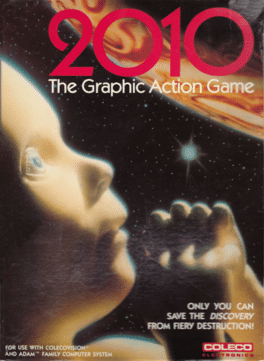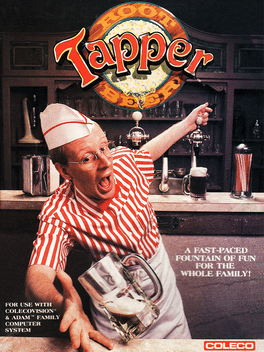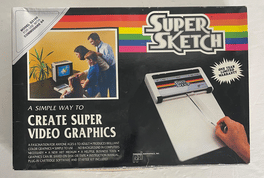New Colecovision Games - Page 2
-
Bejeweled
2002
Bejeweled
2002
ColecoVision version of the popular game Bejeweled made by Daniel Bienvenu. The core game remains the same: matching up three or more of the same jewel by swapping their positions with neighboring jewels on a grid. -
Reversi
2001
Reversi
2001
Reversi is based on the classic board game where your objective is to capture the most pieces on the game board by flipping discs to your color. A disc, or an unbroken line of discs of the same color, is captured when it becomes flanked on opposite ends by two opposing pieces, one of which must be the disc that was just placed on the board. -
Ms. Space Fury
2001
Ms. Space Fury
2001
This years’ Classic Gaming Expo and the 10th Anniversary of Digital Press happen to coincide. Obviously, DP wanted to do something special to mark the occasion. What better way than to release an original game for a classic system? Several game developers were contacted, but the job went to Daniel Bienvenu, who had written a few homebrews for ColecoVision (BUSTin Out, Dac-Man). Joe Santulli came up with the title and concept and provided support. A lot of people pitched in to help. Daniel brought in Sylvain (‘Sly DC’) De Chantal to design most of the levels and assist with the graphics. Marcel de Kogel wrote the emulator the game was compiled and tested on. As the project neared completion, Dave Giarrusso designed the artwork for the label and the instruction manual (as well as the full page advertisement shown in the last issue of DP as well as the CGE2K1 show program). Even veteran homebrew author John Dondzila lent his expertise on coding and debugging the program. Most of the communication and brainstormi -
Dacman
2000
Dacman
2000
DacMan is an attempt to bring a version of Pac-Man to the ColecoVision. The game looks similar to Pac-Man but only has three ghosts. The game play is the same. Move about the maze, eating all the dots and avoiding the ghosts. If you eat a power pellet, the ghosts turn blue then you can eat them for points. Also on the cartridge, starting with version 1.3, is a hidden game called DacPong!. This is just like Pong except the ball is the Pac-Man character. -
Steamroller
2000
Steamroller
2000
Repair the potholes in the road. If a beach ball gets in the way, pop it! But beware of beach bombs! You are driving around a continuously deteriorating road, where potholes are forming. You must drive over these potholes to repair them. Along the way, you can drive over beach balls to pop them for points. Don't let a pothole go too long because if it does, it will become a manhole. If a beach ball falls into a manhole, it will emerge as a beach bomb, that can damage you. In a two player game, knock your opponent into the bombs. In a one player game, avoid the other steamroller as it will kill you except for the last few seconds of the round. In that short time, hitting it will kill it. -
Space Invasion
1998
Space Invasion
1998
Space Invasion is a variant of Space Invaders. It has most of the features of the original arcade game with the player moving left and right while shooting at the invaders. -
Kill Barney in Tokyo
1997
-
Killer Instinct
1997
Killer Instinct
1997
Shooter game for Colecovision in which you eliminate enemies. When you run out of bullets whoever has got the highest score wins. -
Winky Trap
1997
Winky Trap
1997
Winky Trap is an arcade action game similar to Pac-Man. You control Winky in a maze; your goal is to eat all dots in order to score points and move on to the next maze. It's a hacked version of Mouse Trap where the characters where replaced from ColecoVision's game Venture. Only 5 games were produced and they all sold over 200$ each. -
Cosmo Fighter 2
1996
Cosmo Fighter 2
1996
A giant spaceship is threatening to attack the planet Xunor and capture its inhabitants. As commander of the mighty Cosmo Fighters, you are given the task of eliminating this evil force and returning peace to the galaxy. But this mission won’t be an easy one! To reach your goal, you must fight your way through various stages, each filled with advanced enemy fighters, grouping together to prevent you from finishing your mission successfully. -
Kevtris
1996
Kevtris
1996
A Tetris clone for the ColecoVision. Despite being an early home-brew, Kevtris features both colourful graphics and background music, as well as three different game modes for both one and two players as well as handicaps. Apart from the normal Tetris game mode, there is the zero-out mode, where you have to clear a set number of lines to win a game, and the builder mode, where the blocks don't fall automatically, giving you all the time in the world to plan your moves. -
Skiing
1986
Skiing
1986
Skiing is a 1-4 player sports game that was released a year after Coleco discontinued the system. The two events are Slalom (pass between a set number of gates) and Downhill (avoid moguls on the course), and the objective is to finish in the quickest possible time. -
Amazing Bumpman
1986
Amazing Bumpman
1986
Amazing Bumpman is an Action game, developed by VSS and published by Telegames, Inc., which was released in 1984. -
Choplifter!
1985
-
2010: The Text Adventure Game
1985
Text adventure based on the movie "2010" based on the novel by Arthur C. Clarke. -
Q*bert's Qubes
1985
Q*bert's Qubes
1985
Q*Bert's Qubes is the sequel to the game Q*Bert and features similar gameplay, but is now in three dimensions. Once again your goal is to change multicolored blocks to a target color, but now you must make sure all three visible sides of the blocks match the target color. You control Q*Bert on the playfield of blocks; Q*Bert changes the colors by jumping to a block which will cause it to rotate in the direction of his jump. Unlike the original game, you don't need to change the colors of the whole playfield, but rather need to form straight line(s) of the target colors, and when you do you can move on to the next round. Of course, to make this task more challenging are a variety of creatures (including a giant rat!) that chase you around the playfield. Each creature is a different color, and if it lands on a block where the top face is the same color then the creature falls off of the playfield, but if Q*Bert gets caught by a creature then a life is lost! As the game progresses, more creatures chase Q*Bert and addi -
Learning with Leeper
1985
Learning with Leeper
1985
In Lunar Leeper, one of Sierra's earlier arcade games, players had to rescue prisoners on a planet's surface while avoiding the "Leepers", who would leap into the air in an attempt to grab them, and one of the Leepers feature in this game. Similar to Learning with FuzzyWOMP, the player can select one of four games, by moving the Leeper to the icon and pressing the fire button to select it. -
2010: The Graphic Action Game
1985
2010: The Graphic Action Game is a puzzle/maze game with elements from 2010: Odyssey Two where the player must save the Discovery from crashing onto the surface of Jupiter's volcanic moon, Io. The player must choose one of about five circuits to work on in one of the ship's critical systems: Engine, Power, Communications, Life Support, and the HAL 9000. Successful power routing of a circuit makes each system slowly come on-line. It takes three powered circuits for minimum function, but four provides more leeway for success. On-Line engines and power can be activated for an orbital boost, but too long a burn will damage circuit components. HAL 9000 can power undamaged circuits you assign to him, although at a much slower pace than the player. Communications allow a powered HAL 9000 to inform you of success/failure at powering a circuit assigned to him. Life Support gives more protection against EMPs damaging powered circuits, which require repair and repowering. -
Tapper
1984
-
Super Sketch
1984
Super Sketch
1984
The game cartridge used for the ColecoVision's Super Sketch drawing tablet accessory.
